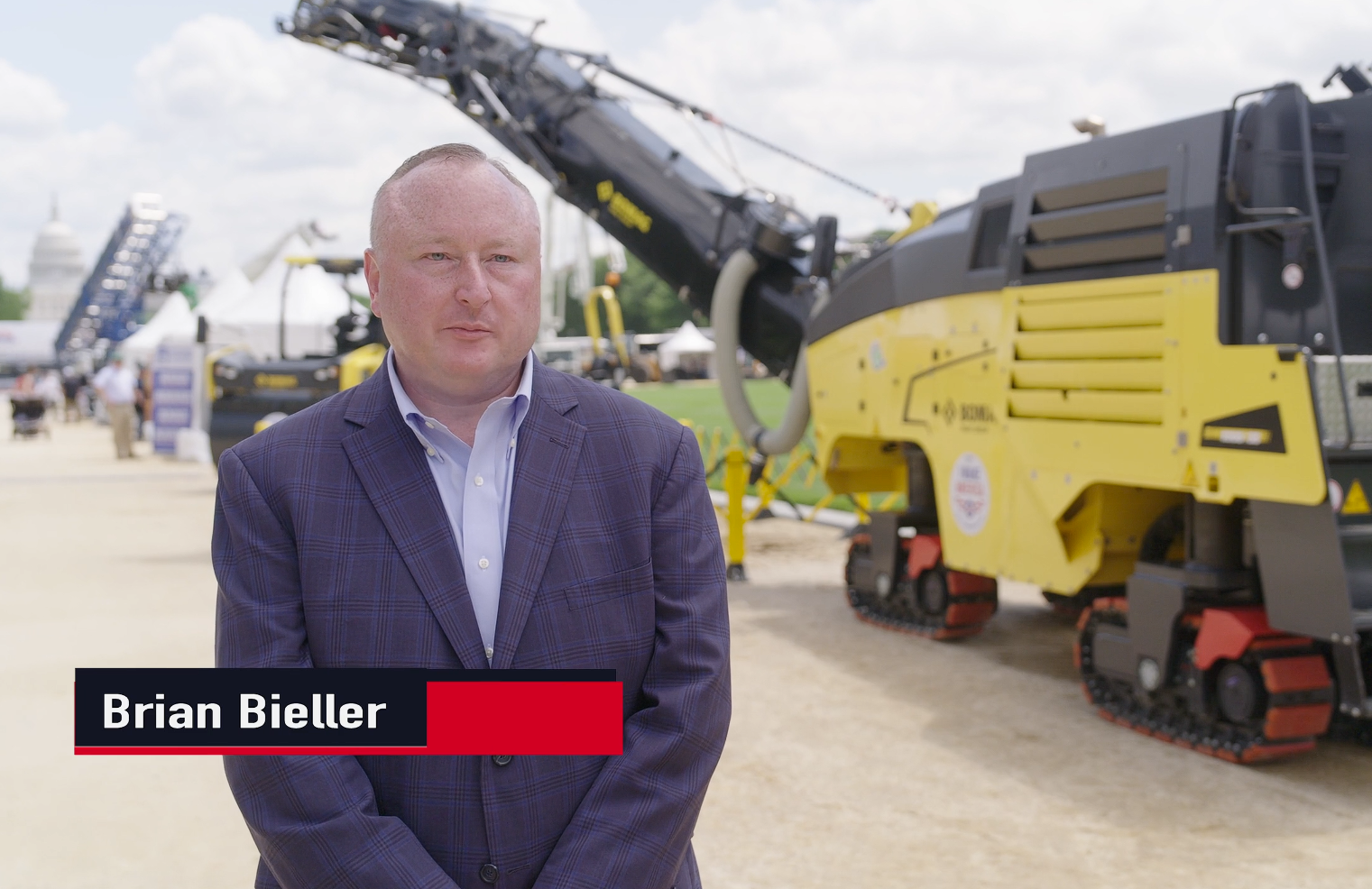As the global population has doubled over the past 50 years, farmers have needed to figure out how to feed the world with fewer resources (per capita) than ever before. They’ve managed quite well, thanks to a willingness to learn, adapt, and embrace innovations that help drive productivity.
“A big part of that is the big iron that gets more product out of the field,” said Mark Isbell, a rice farmer and co-founder of AEM member company Arva Intelligence, which provides carbon insetting and offsetting solutions. “Insights are now as important as the equipment. The more knowledge you gain about the soil and other factors, the more efficient you can become as a farmer. Big technologies make it possible to do more with less.”
Isbell was one of three panelists who participated in a roundtable discussion on the role of new and emerging technologies in sustainable agriculture. The roundtable was one of many held during AEM’s second annual Celebration of Modern Agriculture on the National Mall in Washington, D.C., in May.
Elizabeth Dougherty, Eastern Regional Outreach Director at the United States Patent and Trademark Office (USPTO), appeared on the panel as well. She said it’s an exciting time for innovation in agriculture.
“We’re seeing a lot more activity around AI, heavy computing, and overall growth in software,” Dougherty said. “And we’re seeing it across all areas of agriculture.”
Accessible Data Helps Drive Meaningful Action
As technology’s imprint on agriculture has continued getting stronger, the datasets being captured have continued getting larger. Bigger isn’t always better, though. Sometimes farmers feel like they are drowning in data.
“Good data has to be actionable, which hasn’t always been the case over the past 15 years,” said panelist Todd Martin, co-founder and chief commercial officer at AEM member company EarthOptics. “People have continually found ways to collect more data from a farming operation. Some of that data is nice to know, but that’s different from need to know. Now we’re getting to a point where data is able to help farmers actually save money, improve yield, and increase profitability.”
There is a huge sustainability component to those farming improvements, as well. More efficient farming leads to reduced use of water, fertilizer, and chemicals, as well as a reduction in fuel consumption and emissions. That is why the other key element of the ag sustainability discussion relates to the monetization of sustainable farming practices.
“We must continue finding ways to monetize the improvements farmers are making so they can be compensated for the innovative things they’re doing to more sustainably produce more food,” Isbell said. “The things farmers are doing can help others in the supply chain meet their own emission-reduction goals. There is value to that.”
Farmers don’t have time to become data scientists, though.
“The industry’s focus must be on providing data in a format that allows farmers to make decisions on it, and also generate additional revenue through carbon incentive programs,” Martin said.
“Insights are now as important as the equipment. The more knowledge you gain about the soil and other factors, the more efficient you can become as a farmer. Big technologies make it possible to do more with less.” -- Arva Intelligence's Mark Isbell
Enhancing Food Transparency
Food traceability is also getting an assist from data and emerging technology. In fact, there has been an increase in patent- and trademark-related activity around this area of agriculture.
“There are a lot of exciting things coming in,” Dougherty said. Innovations around specific functions like the creation of digital signatures is one example. “We’re also seeing patentable software that’s able to associate products and services with the company that’s creating them,” Dougherty added.
The bottom line is that today’s consumers want more visibility into the foods they are eating. They want to know where they came from and that they have been sustainably produced.
“It’s important to highlight the work being done by my colleagues on the trademark side of the USPTO,” Dougherty said. “Trademarks serve as the indicator of the source of goods or services. This is where the buying public can understand and appreciate how things are coming to them. The trademark is going to be what seals the deal between seller and consumer.”
Technology and data can actually validate much more than just the source of a food product. As Isbell pointed out, certain data can also provide insights into the farming activities that helped not only produce that food, but also make for a better planet.
Ag’s Role in the Renewable Energy Boom
The agriculture industry is also playing an important role with respect to renewable energies — whether using them in farming operations or helping produce them for other users.
Biofuels are often talked about with respect to on-road and off-road equipment. But what about in the air? Martin said sustainable aviation fuel (SAF), represents an enormous opportunity for farmers. A viable SAF can help the aviation industry reduce its carbon footprint, while also offering a better alternative to battery power.
“I don't know about you, but I'm not really excited about getting on a jet that is powered by a battery and going across the Atlantic Ocean,” Martin said. “So SAF is a very exciting area. I’m glad the USDA and Department of Energy have joined in on this. The Inflation Reduction Act also has a couple of clauses in it regarding incentives for farmers.”
Solar is another renewable energy that has a direct connection to agriculture. Farmland is proving to be a prime destination for massive solar farms throughout Rural America. The dilemma for farmers is how to go about using their land. At the end of the day, Martin said, the typical farmer is going to lean toward whatever will help them make the most money. If leasing land for a solar farm is the best option, so be it.
But perhaps it doesn’t always have to be a binary decision. Are there opportunities to double-use the land for both solar energy generation and food production?
“We’re working with a company right now that is using solar fields to graze sheep,” Martin shared. “So, there are opportunities. Agriculture definitely has a place in our future with renewable energy. But we have to find a way to maximize our production of food with our desire to produce clean energy.”
“Good data has to be actionable, which hasn’t always been the case over the past 15 years. People have continually found ways to collect more data from a farming operation. Some of that data is nice to know, but that’s different from need to know. Now we’re getting to a point where data is able to help farmers actually save money, improve yield, and increase profitability.” -- EarthOptics' Todd Martin
Savvy Farmers Must Drive the Change
As current agriculture technologies continue to garner more widespread adoption — and new technologies continue to be developed, patented, and deployed — the agriculture industry is well-positioned to continue feeding a growing population, while also helping to preserve the planet.
“Farmers are the best environmentalists out there. In fact, they are conservationists,” Martin said. “Somebody who’s been on a family farm for more than a generation has that land because the previous generation took care of it. Now that land is going to the next generation for the very same reason. It is absolutely important that we recognize how farmers are taking care of the land. That’s where they make their living. That's where their life is. We can't allow other voices that haven't been on a farm to rule the conversation for us.”
Another thing Martin cautioned against was relying on the government to mandate changes to farming practices, which typically happens through incentives. First of all, a specific practice change may not work on every farm. Secondly, it isn’t the practice change that should be rewarded, it’s the favorable outcome of that change.
“If a farmer learns how to better their yield and lower their cost, they’re going to do it,” Martin said. “With all of the innovations that are out there, farmers will figure it out. Farmers are inherently smart. We just need to tell them the outcome we want, and give them the tools to choose from to make it happen.”
Learn More
Want more information on best practices, tools, programs, and resources to help initiate lasting change to protect the environment, align with evolving regulations, and accelerate the ability to remain competitive and sell products globally? Visit AEM's Sustainability Toolkit.
Subscribe to the AEM Industry Advisor for more member and industry perspectives.





